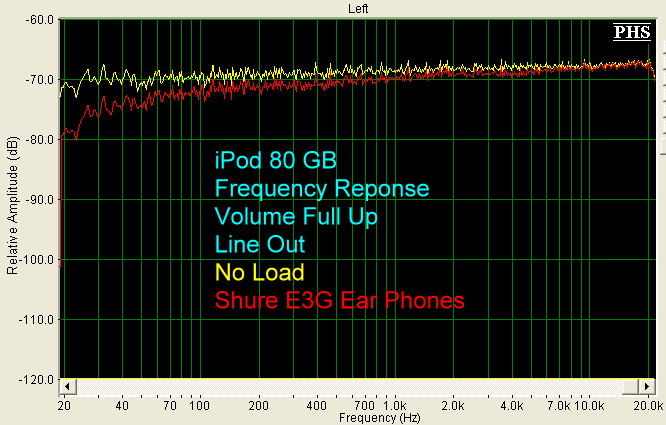|
||||||
|
New Ear Phones I decided that it must be the ear buds. They probably were about $2 of the $349 that I had paid for the iPod. I decided to try using better quality ear phones. So, I contacted Shawn McGloughlin of Full Compass. I asked if I could get a few nice ear phones for an article I wanted to write about MP3 players and whether or not using better ear phones than the ones that come with the players makes any difference. He responded by sending me a huge box of them (and I mean a BIG box that Susan wants me to move out of the dining room). Denon also sent me some ear phones. I will probably get more in response to this article, as I am focusing on the iPod itself here, with the report on the various ear phones to come shortly. Anyway, I excitedly unpacked some of the ear phones. I plugged them into the iPod, and listened to some of my favorite Baroque classical music. The highs were clearer, but the midrange and bass were still lacking. What the heck? Even the phones that were labeled as being for those consumers who really love bass (yours truly), and have big "enclosures" . . . well, the bass was just not there. Scratch theory number 1. Theory Number 2 Realizing that the poor bass was not the fault of the ear phones, I decided to take a deeper look into the iPod itself. I did a Google search and found that there were a few bench tests out there, indicating that the bass rolled off when the iPod had a load (ear phones, impedance of a few dozen ohms). Here are some links: http://home.comcast.net/~machrone/playertest/playertest.htm http://www.machrone.net/mt/archives/2010/09/ipod_nano.html. But, I wanted more data, such as specific distortion numbers. So, I decided to put the iPod through one of our bench tests, measuring distortion and frequency response. On the Bench First, I created a number of test tones, including sine waves, pink noise, white noise, and frequency response sweeps. I moved them into iTunes and stored them as Apple Lossless files, and also in MP3 format (192 kb/sec). This is the highest MP3 quality iTunes has available. Then I "synced" the iPod with the test files in two directories. I connected several adapters to the iPod so that I could simultaneously play the files into just the sound card on my computer (10 kOhms, essentially no load) and also have ear phones connected in parallel (I selected the Shure E3G in-ear phones for this - impedance 26 ohms - as they were the ones I liked best at this point, having listened to four sets of ear phones). All tests were performed with the EQ set to Off. Here are the results. The frequency response at full volume and half volume is shown below. Even with no ear phones, the response falls off significantly starting at 10 kHz to be ± 3 dB from 20 Hz - 20 kHz with no load, and ± 7 dB with the ear phones plugged in (± 5 dB at half volume). Hey guys, this is not good. In fact, lousy. (The response graph lines are jagged because I used white noise and was unable to employ transfer functions due to the test signal being generated by the iPod rather than the sound card.)
|
||||||





